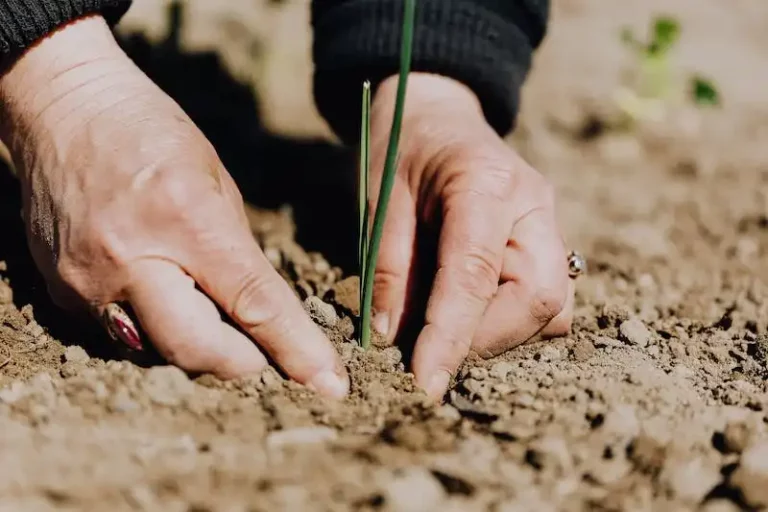If you have a spider plant, you may have noticed that it starts to produce small plantlets, or spiderettes, that dangle from long stems. These spiderettes can be propagated to grow new plants. In this article, we will discuss three methods of propagating spider plants, along with step-by-step instructions and photos to guide you through the process.
The most common method of propagating spider plants is by using the spiderettes that grow from the mother plant. After a spiderette has grown to about 3-5 inches long, it can be cut away from the mother plant. You can simply cut the stem right below the spiderette and remove any leaves from the bottom part of the stem.
Once you have removed the spiderette from the mother plant, you have a few options for rooting it. One method is to place the spiderette in a glass of water, making sure that the bottom part of the stem is submerged. Another method is to wrap the bottom part of the stem in a damp paper towel or in sphagnum moss and then place it in a plastic bag to create a humid environment.
Regardless of the method you choose, you will need to wait a few weeks for roots to grow. During this time, make sure to keep the rooting material damp and provide indirect light for the spiderette. After a few weeks, you should start to see roots forming. Once the roots are well-established, you can move the spiderette to a pot filled with well-draining soil and start to grow it as a separate plant.
Spider plants are quite easy to propagate, and they can produce a large number of spiderettes over time. By taking just a small part of the mother plant, you can easily create a whole new plant. It’s an amazing process to watch the spiderettes grow roots and become independent plants themselves. If you have a spider plant, why not give propagating spiderettes a try?
How to Propagate Spider Plants Top 3 Methods
Spider plants (Chlorophytum comosum) are popular houseplants known for their attractive arching leaves and ability to easily reproduce. If you have a spider plant that you love and want to increase your collection or give some spider plants to friends, propagating spider plants is a simple and rewarding process. Here, we will discuss the top 3 methods for propagating spider plants.
Method 1: Propagation via Spiderettes
The most common and easiest way to propagate spider plants is through their spiderettes, which are the tiny plantlets that form at the end of long stems. To start the process, locate a spiderette that has developed roots at the base. Use a pair of clean, sharp scissors or garden shears to snip the spiderette away from the mother plant. Make sure to leave enough stem length to allow the new plant to root.
Next, prepare a small pot with well-draining soil and plant the spiderette, ensuring that the roots are covered. Water the new plant enough to moisten the soil, but avoid overwatering. Place the pot in a bright location, but away from direct sunlight. Within a few weeks, the spiderette should take root and begin to grow.
Method 2: Propagation via Runners/Stolons
Spider plants also send out long, thin stems called runners or stolons. These stems grow along the surface of the soil and produce small plantlets. To propagate via runners, gently pull a runner towards the surface of the soil or use a small stake to hold it in place. Once the runner has been anchored to the soil, cover it lightly with potting soil. After a few weeks, the runner will take root and each plantlet will start to grow.
Method 3: Propagation via Seeds
If you want to try a more challenging method, propagating spider plants from seeds is an option. Spider plant seeds are small and black, and they are typically found in seed pods that form after the flowers fade. To start the process, wait until the seed pods turn brown and split open. Remove the seeds from the pod and place them on a moist paper towel. Fold the towel over the seeds and place it in a plastic bag. Keep the towel damp and wait for the seeds to germinate. Once the seeds have sprouted, plant them in a small pot with well-draining soil and care for them as you would any other spider plant.
Whether you choose to propagate spider plants from spiderettes, runners, or seeds, following these simple steps will increase your collection of spider plants in no time. Happy propagating!
Spider Plant Care Propagation Tips
Spider plants, also known as Chlorophytum comosum, are popular houseplants known for their long, arching leaves. One of the most amazing things about spider plants is their ability to propagate, or produce new plants, through a process called “spiderettes”.
Spiderettes are tiny plantlets that form at the end of long runners, called stolons, that grow from the main plant. There can be anywhere from 2 to 4 spiderettes on each stolon, depending on the plant’s health and growing conditions.
If you want to propagate your spider plant, there are a few different methods you can try. The first method is rooting the spiderettes directly in water. To do this, simply detach the plantlets from the mother plant and place them in a small container filled with water. Make sure to keep the water level close to the base of the plantlets. After a few weeks, roots should start to form.
Another method is rooting the spiderettes in soil. To do this, use a plastic or smaller potting container filled with damp soil. Snip the stolon close to the base of the plantlet, then plant the plantlet in the soil, making sure the roots are covered. Water the soil lightly and place the pot in a warm, bright location.
Since spider plants produce many runners or stolons, propagation can result in many new plants. You can snip off the spiderettes and plant them in separate containers or choose to keep them attached to the mother plant. Either way, be sure to provide adequate care and not overwater the plants.
It’s also important to note that variegated spider plants, which have leaves with white or cream-colored stripes, do not produce spiderettes as often as non-variegated plants. If you have a variegated spider plant and want to propagate it, you may need to wait longer for the plant to produce spiderettes.
Overall, spider plant propagation is a fun and rewarding process that allows you to easily grow more of these beautiful plants. Whether you choose to root the spiderettes in water or soil, following these simple steps will increase your chances of successful propagation.
Propagating spider plants: how to root spiderettes
Spider plants, scientifically known as Chlorophytum comosum, are popular houseplants that produce small plantlets, also known as spiderettes, that can be easily propagated to create more plants. Here is a step-by-step guide on how to root spiderettes and propagate spider plants.
Step 1: Find the perfect mother plant
To start propagating spider plants, you first need to find a healthy mother plant that is producing spiderettes. Look for a mature plant with numerous spiderettes forming at the ends of long stalks.
Step 2: Snip the spiderettes
Using a pair of clean and sharp scissors or gardening shears, snip the spiderettes from the mother plant. Make sure to leave a little bit of the stolon, which is the stem-like structure connecting the spiderettes to the mother plant.
Step 3: Place the spiderettes in water
Fill a glass or container with water and place the snipped spiderettes inside, making sure the stolon is submerged. You can also use plastic bottles or jars for this method. Keep the container indoors in a spot with enough sunlight.
Step 4: Wait for roots to form
It will take some time for roots to form on the spiderettes, usually within a few weeks. Be patient and make sure to change the water regularly, as stagnant water can hinder root development. Once the spiderettes have developed a good root system, they are ready for planting.
Step 5: Prepare for planting
Before planting, prepare a potting mix that is well-draining and rich in nutrients. Remove the spiderettes from the water and gently separate them from the stolon. Place each spiderette in an individual pot or in clusters, depending on your preference.
Step 6: Start the growth
Plant the spiderettes in the potting mix, making sure they are placed just below the surface. Water the newly planted spiderettes and keep the soil slightly damp. Avoid overwatering, as this can lead to root rot.
Step 7: Watch them grow
Spiderettes will quickly start growing and producing their own baby spider plants. Make sure to provide them with enough sunlight and water, and watch as your spider plant collection expands.
By following these easy steps, you can easily propagate spider plants and increase your growing collection. Spiderettes can also be propagated by dividing the mother plant or by planting their seeds, but the method described above is one of the simplest and most successful ways to root spiderettes.
Sources:
– “How to Propagate Spider Plant Babies (Spiderettes)” – The Spruce
How to propagate spider plants
Spider plants are known for their ability to produce spiderettes, or plantlets, which can be easily propagated to increase your plant collection. Propagating spider plants is a simple process that can be done without rooting hormone. In this article, we will discuss the steps involved in propagating spider plants.
- First, take a look at your spider plant and identify the spiderettes. These are small plantlets that grow on long stems, called stolons, which hang down from the parent plant.
- Once you have identified the spiderettes, choose a suitable container for their propagation. A glass of water works well for this purpose. Fill the glass with water, leaving about an inch of space at the top.
- Next, take the spiderettes and gently separate them from the stolons. You can simply twist them off or cut them using a clean pair of scissors.
- Place each spiderette in the glass of water, making sure that the bottom part is submerged. You can place multiple spiderettes in the same glass if you have more than one to propagate.
- Place the glass in a well-lit area. Spider plants prefer bright, indirect light for best growth. You should start to see roots forming within a week or two.
- Once the roots have formed and are long enough, you can plant the spiderettes in potting soil. Make a small hole in the soil, gently remove the spiderette from the water, and place it in the hole. Cover the roots with soil and press it down gently to secure the plantlet.
- Water the newly planted spiderettes enough to keep the soil slightly moist, but not overly saturated. Spider plants do not like to be waterlogged.
- Continue to care for the newly planted spiderettes by providing them with adequate light and water. They will quickly grow into small spider plants, which can be further propagated.
- If you have a variegated spider plant, you can also propagate it by division. This involves splitting the plant into smaller sections, each with its own root system. To do this, remove the plant from its pot and carefully divide it into smaller sections, making sure that each section has a good amount of roots. Plant the divided sections in separate pots and follow the same care instructions as mentioned above.
- Spider plants can also be propagated from seeds, although this method is less common. In order to propagate spider plants from seeds, you will need to collect the seed pods when they turn brown and dry. Separate the tiny seeds from the pods and plant them in a shallow tray filled with potting soil. Keep the soil moist and place the tray in a warm location. The seeds will germinate within a few weeks, and the resulting seedlings can be potted individually once they are large enough to handle.
Propagating spider plants is an amazing way to increase your collection and it’s also a great way to share plants with friends and family. Whether you choose to propagate spiderettes or divide the plant, the process is fairly straightforward and rewarding. Just remember to provide the newly propagated plants with enough light, water, and care, and soon you will have a beautiful collection of spider plants in your indoor or outdoor garden!



